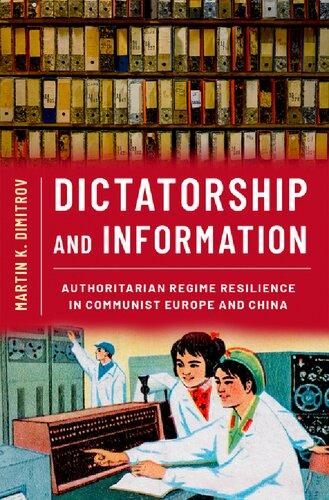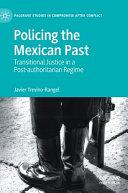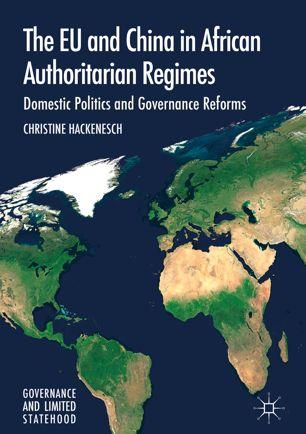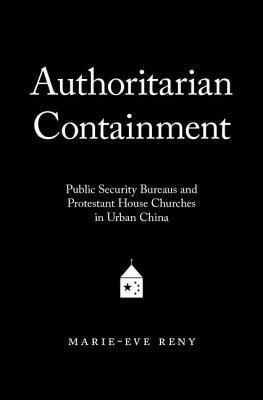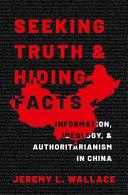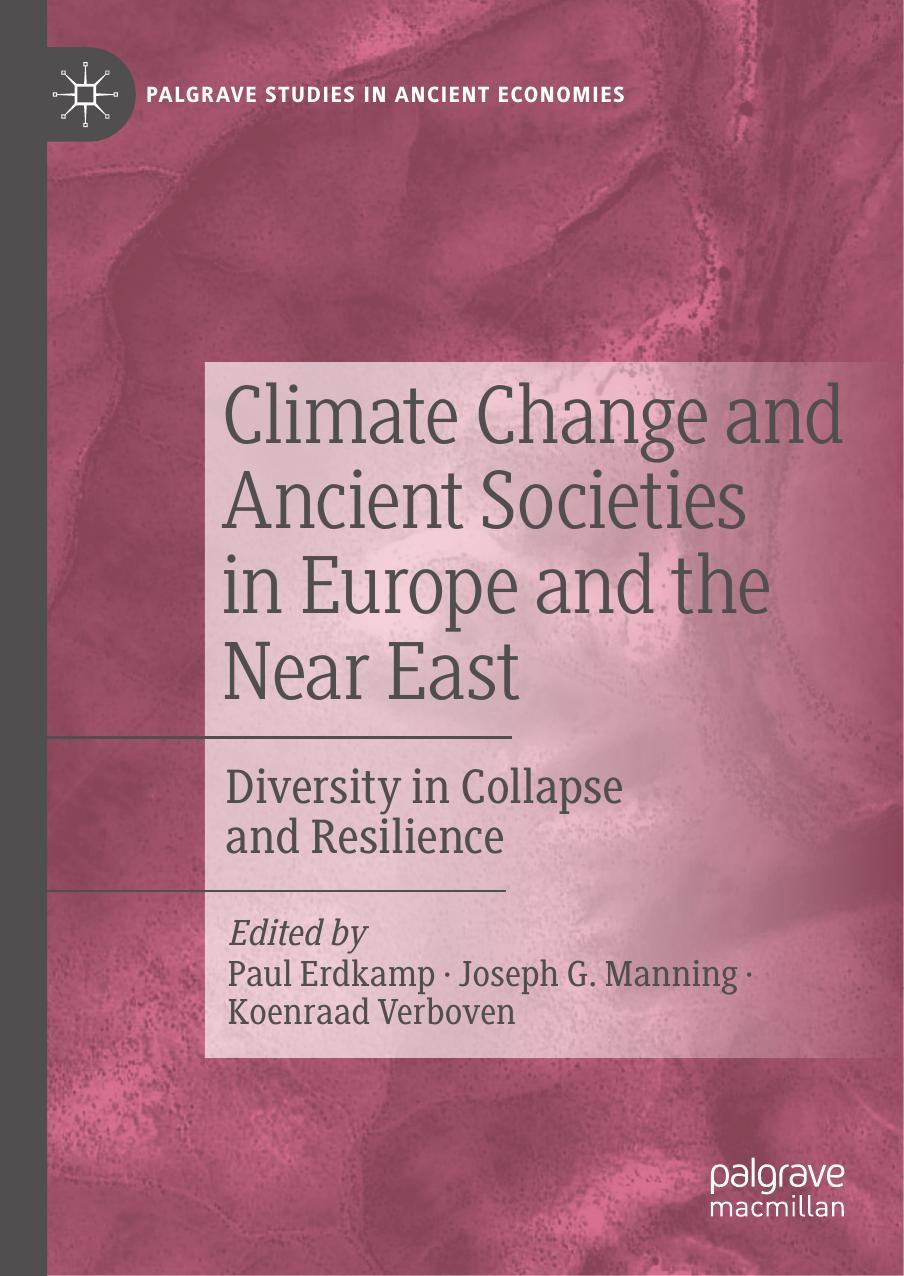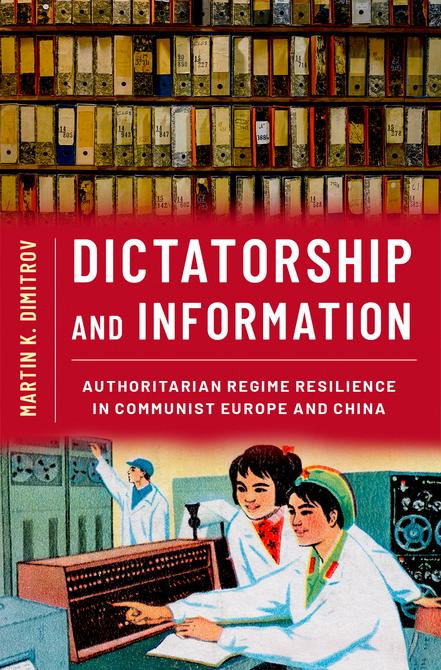Dictatorship and Information
Dictatorship and Information
Authoritarian Regime Resilience in Communist Europe and China
MARTIN K. DIMITROV
Oxford University Press is a department of the University of Oxford. It furthers the University’s objective of excellence in research, scholarship, and education by publishing worldwide. Oxford is a registered trade mark of Oxford University Press in the UK and certain other countries.
Published in the United States of America by Oxford University Press 198 Madison Avenue, New York, NY 10016, United States of America.
© Oxford University Press 2023
All rights reserved. No part of this publication may be reproduced, stored in a retrieval system, or transmitted, in any form or by any means, without the prior permission in writing of Oxford University Press, or as expressly permitted by law, by license, or under terms agreed with the appropriate reproduction rights organization. Inquiries concerning reproduction outside the scope of the above should be sent to the Rights Department, Oxford University Press, at the address above.
You must not circulate this work in any other form and you must impose this same condition on any acquirer.
Library of Congress Cataloging-in-Publication Data
Names: Dimitrov, Martin K., 1975- author.
Title: Dictatorship and information : authoritarian regime resilience in communist Europe and China / Martin K. Dimitrov.
Description: First Edition. | New York : Oxford University Press, [2023] | Includes index.
Identifiers: LCCN 2022030798 (print) | LCCN 2022030799 (ebook) | ISBN 9780197672938 (Paperback) | ISBN 9780197672921 (Hardback) | ISBN 9780197672952 (epub)
Subjects: LCSH: Authoritarianism—Case studies. | National security—Bulgaria. | National security—China. | Intelligence service—Bulgaria. | Intelligence service—China. Classification: LCC JC480 .D56 2023 (print) | LCC JC480 (ebook) | DDC 320.53—dc23/eng/20220811
LC record available at https://lccn.loc.gov/2022030798
LC ebook record available at https://lccn.loc.gov/2022030799
DOI: 10.1093/oso/9780197672921.001.0001 1 3 5 7 9 8 6 4 2
Paperback printed by Sheridan Books, Inc., United States of America
Hardback printed by Bridgeport National Bindery, Inc., United States of America
For Bradin
List of Figures and Maps ix
List of Tables xi
Acknowledgments xiii
List of Abbreviations xvii
PART I. THEORY AND METHOD
1. Introduction: Solving the Dictator’s Dilemma 5
2. Studying Government Perceptions of Popular Discontent in Autocracies 31
PART II. PARALLEL ORIGINS OF COMMUNIST INFORMATION STATES
3. Monitoring and Counteracting Dissent in Bulgaria, 1944–1958 75
4. Monitoring and Counteracting Dissent in China, 1949–1958 117
PART III. DIVERGENT EVOLUTION OF COMMUNIST INFORMATION STATES
5. Bread and Circuses: Consumption and Stability in Bulgaria, 1959–1988 161
6. Continuity and Change: Information Gathering in China, 1959–1988 224
PART IV. SIMILAR CRISES, VARIED CONTEXTS, DIFFERENT REFORMS
7. Information-Gathering Institutions in Bulgaria, 1989–1991 275
8. Information-Gathering Institutions in China, 1989–2019 303
PART V. GENERALIZABILITY OF THE THEORY
9. Scope Conditions: Authoritarian Information-Gathering Institutions 369
10. Conclusion: Information and Authoritarian Regime Resilience 436 Index 447
Figures and Maps
2.1 KGB 1967 annual report, with number of spies added by hand
2.2 Chinese police almanac information on spies in Changchun in 2003, with numbers deleted
4.1 Rate of saturation with social-order informants in China, 1949–1958 (as a percentage of the population)
4.2 Prison population in China, 1949–1958
4.3 Share of prisoners incarcerated for counterrevolutionary crimes in China, 1949–1958
4.4 Total number of reports on hunger and famine in Neibu cankao, 1949–1964
5.1 Number of jokes and prosecutions for spreading rumors and jokes in Bulgaria, 1957–1989
5.2 Number of individuals prosecuted for antistate crimes in Bulgaria, 1959–1989 (per million people)
5.3 Number of individuals imprisoned for crimes against the state and for fleeing the republic or illegal border crossings in Bulgaria, 1959–1983
5.4 Anonymous materials and their authors in Bulgaria, 1969–1984 173
5.5 Volume of citizen complaints in Bulgaria, 1984–1988
6.1 Individuals imprisoned for counterrevolutionary crimes in China, 1958–1966
6.2 Letters and visits to the State Council in China, 1957–1965
6.3 Number of issues of Neibu cankao, 1949–1964
6.4 Visible police informants in China, 1970–1989 (as a percentage of the population)
6.5 GIS map of the density of social-order informants per province in China, 1987 (members/km2)
6.6 GIS map of the saturation of social-order informants per province in China, 1987 (as a percentage of the population)
6.7 Prison population in China, 1949–1989
6.8 Citizen complaints in Gansu, 1978–1989
6.9 Citizen complaints in China, 1979–1989
6.10 Share of minorities in the CCP in Tibet and in the general population in Tibet, 1958–1987
6.11 Discipline inspection denunciations in Tibet, 1957–1965 264
6.12 Discipline inspection denunciations in Tibet, 1979–1989 265
6.13 Percentage of minority police in the city of Urumqi, 1950–1990 267
6.14 Membership in social-order protection committees and small groups as percentage of the population in Chongqing (1950–1985) and Urumqi (1951–1990) 268
6.15 Increase in CCP membership, as a percentage of the population in Tibet (1958–1987), Xinjiang (1956–1987), and nationwide (1958–1987) 270
6.16 Minority share of the CCP in Xinjiang and in the general population in Xinjiang, 1958–1987 271
8.1 Grid policing contact information in Guangzhou 323
8.2 Visible police informants in China, 1989–2017 (as a percentage of the population) 329
8.3 Number of citizen complaints and protests in China, 1990–2006 336
8.4 Complaints lodged at letters-and-visits offices, 2004–2017 337
8.5 Discipline inspection denunciations in Tibet, 1989–2013 361
8.6 Discipline inspection denunciations in Xinjiang, 1999–2012 362
9.1 CDR in contemporary Cuba 413
9.2 Rebellion and spy cases in Taiwan, 1945–1987 (average per year) 420
9.3 Opposition cases in Taiwan, 1945–1987 (average per year) 421
9.4 Petitions in Taiwan, 1982–1988 (per million people) 423
9.5 Individuals disappeared and executed in Chile, 1973–1990 433
9.6 Disappearances and executions during the first three years of the military dictatorships in Chile and Argentina (per million people) 434
1.1 Average tenure of autocracies, 1946–2008
1.2 Composite score of bureaucratic capacity at regime inception
1.3 Overview of the study: Main channels for the collection of information and entities managing these channels
2.1 Archives and special collections and their locations
2.2 Types of discontent
2.3 Political demands versus material frustrations
2.4 Involuntary extraction versus voluntary provision of information
2.5 Main mechanisms for assessing discontent
3.1 Determinants of the percentage of invalid votes in the 1949 Bulgarian elections
3.2 Elite recruitment, elite job assignments, and selective rewards for minorities in Bulgaria, 1945–1970 (per 1,000 members of the minority)
4.1 Levels of illiteracy in Chinese ministerial xitong, 1959
4.2 Coverage of some sensitive news items in Neibu cankao, 1949–1958
4.3 Suppression of counterrevolutionaries in Guangxi, 1950–1953
4.4 Number of reports from selected Chinese provinces and from Yugoslavia in Neibu cankao, 1949–1958
4.5 Minority members of the police in Urumqi, 1949–1958
4.6 Political prisoners in Xinjiang and in China overall, 1951–1958
5.1 Political crimes investigated in Bulgaria, 1952 and 1965
5.2 Nationwide State Security agent network in Bulgaria, 1986
5.3 Issues raised in citizen complaints in Bulgaria, 1982
5.4 Issues covered in the Bulgarian Telegraph Agency Special Addendum S-3 reports, 1981
5.5 Prison population of operational interest to State Security in Bulgaria, 1986 215
6.1 Absolute size and relative rate of saturation with State Security employees in China, Bulgaria, and the GDR in 1989
6.2 Determinants of the number of visible informants in Chinese provinces, 1987
6.3 Investigation of counterrevolutionary crimes in Guangxi, 1988
6.4 Political prisoners in Tibet and in China overall, 1965–1989 262
6.5 Political prisoners in Xinjiang and in China overall, 1952–1989 266
6.6 Political cases in the city of Urumqi, 1979–1990 269
8.1 Counterrevolutionary crimes in Guangxi, 1989 317
8.2 Counterrevolutionary crimes in Guangxi, 1991 318
8.3 Reports of negative online sentiments in Jiujiang, 2014 353
8.4 Types of intelligence collected by the Xinjiang Production and Construction Corps and their use to identify, prevent, and curb political threats, 1993–1997 360
9.1 Individuals charged with crimes against the state by the Soviet KGB versus individuals subjected to prophylaxis, 1959–1974 386
9.2 Individuals charged with crimes against the state in the Soviet Union, 1959–1988 387
9.3 Stasi domestic counterintelligence reports sent to non-Stasi recipients in the GDR (selected years) 397
Acknowledgments
Writing this book has been an adventure, an intellectual but also a real one, that took me to several dozen research sites across Asia, Europe, Latin America, and various parts of the United States. Since 2007, I have accumulated intellectual and personal debts that I am glad to acknowledge in the lines that follow.
Several institutions provided fellowship support for this project: the Woodrow Wilson International Center for Scholars; the Notre Dame Institute for Advanced Study; the American Academy in Berlin; the Aleksanteri Institute at the University of Helsinki (which hosted me repeatedly); the Princeton Institute for International and Regional Studies; and the ATLAS program of the Louisiana Board of Regents. Further financial assistance was supplied by grants from the Rockefeller Center and the Dickey Center at Dartmouth College; by the School of Liberal Arts, the Stone Center, the Cuban and Caribbean Studies Institute, and the Office of Academic Affairs at Tulane University; by the Institute for Studies of the Recent Past in Sofia; and by the China and Inner Asia Council of the Association for Asian Studies. In addition, I want to thank several institutions that generously opened their doors to me: the Fairbank Center at Harvard; the Davis Center at Harvard; the East Asian Legal Studies Program at Harvard Law School; and the Universities Service Centre at the Chinese University of Hong Kong.
Over the years, I had the opportunity to present portions of this project at Tulane University; Harvard University; Princeton University; Cornell University; Brown University; Dartmouth College; Yale University; Columbia University; Temple University; Southern Methodist University; Louisiana State University; Emory University; the University of Wisconsin Madison; Duke University; the University of Pittsburgh; Wesleyan University; the University of Chicago; the University of Michigan; Stanford University; the University of California Berkeley; the University of California San Diego; the University of California Irvine; Miami University; the Woodrow Wilson International Center for Scholars; the University of Notre Dame; the University of Helsinki; the Finnish Center of Excellence in Russian Studies; the American Academy in Berlin; the Wissenschaftszentrum zu Berlin; the Stasi Records Archive (BStU); GIGA Hamburg; Bundesstiftung Aufarbeitung; the Maison des Sciences de l’Homme et de la Société and the Institute for Studies of the Recent Past in Sofia; the Institute for the Study of Totalitarian Regimes (ÚSTR) and NYU Prague; the University of Nottingham; the University of Melbourne; National
Chengchi University; Shanghai Jiaotong University; NYU Shanghai; East China Normal University; Zhejiang University; Renmin University of China; Beijing Union University; Shandong University; and McGill University. Presentations under the aegis of the Harvard-Yenching Institute (at Sun Yat-sen University, Fudan University, and at Harvard-Yenching) and at the Virtual Workshop on Authoritarian Regimes provided additional opportunities for engagement with thoughtful audiences. Elizabeth Perry and Valerie Bunce generously commented on seven chapters of an earlier version of the manuscript. Beatriz Magaloni, Jennifer Gandhi, Grigore Pop-Eleches, Mary Gallagher, Iza Ding, and Dimitar Gueorguiev provided feedback on a more recent draft. I am grateful to all for their constructive suggestions. I also received detailed feedback from two anonymous reviewers for Oxford University Press.
Writing this book has allowed me to get to know a number of exceptional individuals who lead institutions of academic excellence. I am grateful to all of them: Gary Smith (American Academy in Berlin); Markku Kivinen, Markku Kangaspuro, and Anna Korhonen (Aleksanteri Institute in Helsinki); Mark Beissinger (Princeton Institute for International and Regional Studies); Jan Berris (the National Committee on United States–China Relations); William Alford (East Asian Legal Studies at Harvard Law School); and Elizabeth Perry (Harvard-Yenching Institute). At Tulane, I want to acknowledge especially Nancy Maveety, Ana López, and Brian Edwards for their support.
Though I need to protect the anonymity of nearly all the individuals who agreed to participate in ninety-six interviews for this book, I am profoundly grateful that they took the time to speak with me in China, Cuba, Russia, Germany, Bulgaria, and the United States; interviews with public figures are referenced in the footnotes. I feel fortunate to be able to acknowledge explicitly the various archives in which I collected materials for this book; the major repositories are listed in Chapter 2. I want to highlight in particular the assistance of Antonia Guleva (Dossier Commission in Sofia); Pierre Landry and Celia Chan (Universities Service Centre in Hong Kong); and Nancy Hearst (Fairbank Center Library), whose care and attention also improved this book. In addition, I want to thank my research assistants Zhu Zhang (now Professor Zhang), Lumin Li, and Andres Sandoval (who constructed the two GIS maps in Chapter 6). At Oxford University Press, Dave McBride deserves special mention for seeing this book through with professionalism and efficiency.
I have been fortunate to be able to call on a group of colleagues, friends, and family over the years. For their support, counsel, and good humor, I am grateful to Carolina Caballero, Calvin Chen, Linda Cook, Nara Dillon, Iza Ding, Dimitar Gueorguiev, Nancy Hearst, Yoshiko Herrera, Sean Knowlton, Anna Korhonen, Zinaida Kurochkina, Ana López, Beatriz Magaloni, Melanie Manion, Isabela Mares, Nancy Maveety, Jean Oi, Virginia Oliveros, Elizabeth Perry, Ben Read,
Joseph Sassoon, Victor Shih, Hiroki Takeuchi, Allison Truitt, and Jeremy Wallace. In New Orleans, Norma Sandoval opened up for me the city she loves. Mary Ann Bohlke taught me a lot about good citizenship. My sister Katya Sabeva and her family have always been there for me. My mother Zlatka Kostadinova has been my rock. And Bradin, well, what is there to say.
AKRDOPBGDSRSBNA
Abbreviations
Bulgarian State Security Dossier Commission
AMVR Archive of the Bulgarian Ministry of the Interior
ANCLA Clandestine News Agency (Argentina)
ATA Albanian Telegraph Agency
BBS bulletin board service
BCP Bulgarian Communist Party
BStU Stasi Records Archive (Germany)
BTA Bulgarian Telegraph Agency
CCP Chinese Communist Party
CDR Committee for Defense of the Revolution (Cuba)
CESPO
CID
Center for Sociopolitical Studies and Opinion Research (Cuba)
Central Investigation Department (China)
CNA Central News Agency (Taiwan)
CNI Central Nacional de Informaciones (Chile)
CoCom Coordinating Committee for Multilateral Export Controls
COMECON Council for Mutual Economic Assistance
CPSU Communist Party of the Soviet Union
DGCI Counterintelligence Directorate (Cuba)
DGI Intelligence Directorate (Cuba)
DIER Departamento de Investigaciones del Ejército Rebelde (Cuba)
DIFA Dirección de Inteligencia de la Fuerza Aérea (Chile)
DIIFAR
Departamento de Información e Investigaciones de las Fuerzas Armadas Revolucionarias (Cuba)
DINA Dirección de Inteligencia Nacional (Chile)
DINE Dirección de Inteligencia del Ejército (Chile)
DPRK Democratic People’s Republic of Korea
DSE State Security Department (Cuba)
FDI foreign direct investment
FH volunteer assistant (GDR Ministry of the Interior)
FOIA Freedom of Information Act
G-2 State Security Department (Cuba)
GARF
State Archive of the Russian Federation
GDP gross domestic product
GDR German Democratic Republic
GIS geographic information system
GMS societal collaborator for security (Stasi)
GPU State Political Directorate (Soviet Union)
GRU Main Intelligence Directorate of the General Staff of the Armed Forces of the Soviet Union
IfM Central Committee Institute for Opinion Research (GDR)
IKM secret informant (GDR Ministry of the Interior)
IM unofficial collaborator (Stasi)
IMK unofficial collaborator for securing conspiracy (Stasi)
ISP Internet service provider
KDNK Committee for Control by the State and the People (Bulgaria)
KGB Committee for State Security (USSR)
KMT Guomindang (Taiwan)
MdI Ministry of the Interior (GDR)
MfS (Stasi) Ministry of State Security (GDR)
MGB Ministry of State Security (USSR)
MINFAR Ministry of Defense (Cuba)
MININT Ministry of the Interior (Cuba)
MJIB Ministry of Justice Investigation Bureau (Taiwan)
MPS Ministry of Public Security (China)
MSS Ministry of State Security (China)
MVD Ministry of Internal Affairs (USSR)
NGO nongovernmental organization
NKGB People’s Commissariat for State Security (USSR)
NKVD People’s Commissariat for Internal Affairs (USSR)
NPC National People’s Congress (China)
NT$ New Taiwan Dollar
OGI Open Government Information Initiative (China)
OGPU Joint State Political Directorate (USSR)
OibE special assignment officer (Stasi)
OLS ordinary least squares
ORI Integrated Revolutionary Organizations (Cuba)
PAP People’s Armed Police (China)
PDB President’s Daily Brief (U.S.)
PLA People’s Liberation Army (China)
PNR National Revolutionary Police (Cuba)
PPS probability proportional to size
PRC People’s Republic of China
PRI Institutional Revolutionary Party (Mexico)
PSB Public Security Bureau (China)
PURSC United Party of the Cuban Socialist Revolution
RFE Radio Free Europe
RMB renminbi (Chinese yuan)
ROSTA Russian Telegraph Agency
RTsKhIDNI Russian Center for the Preservation and Study of Documents of Most Recent History
SAPMO Foundation Archives of the Parties and Mass Organizations of the GDR in the Federal Archives (Germany)
SED Socialist Unity Party of Germany (GDR)
SICAR Servicio de Inteligencia de Carabineros (Chile)
SIDE Secretaría de Inteligencia del Estado (Argentina)
SIN Servicio de Inteligencia Naval (Chile)
SMA Shanghai Municipal Archives
SMS short-messaging service
SOE state-owned enterprise (China)
SR socialist revolutionaries (essers)
SSR Soviet Socialist Republic
TASS Telegraph Agency of the Soviet Union
TsDA Bulgarian Central State Archives
TsIAS Central Information-Analytical Service (Bulgarian State Security)
TsKhSD Center for Preservation of Contemporary Documentation (Russia)
TsUM Central Department Store (Sofia)
TVE township and village enterprise (China)
UMAP military units to aid production (Cuba)
USSR Union of Soviet Socialist Republics
VChK (Cheka) All-Russian Extraordinary Commission
VOA Voice of America
WTO World Trade Organization
XPCC Xinjiang Production and Construction Corps
ZAIG Central Evaluation and Information Group (Stasi)
ZIJ Central Youth Research Institute (GDR)
1 Introduction
Solving the Dictator’s Dilemma
Eruptions of discontent are often unexpected. In 1953, the leaders of the German Democratic Republic (GDR) had not received sufficient warning about the worker unrest that extended to fourteen of the fifteen provinces in the country.1 In 1959, the capital of Tibet was engulfed in an uprising that largely came as a surprise to the leadership in Beijing and to Chairman Mao, who did not believe that the discontent in other areas inhabited by Tibetans would spread to Lhasa.2
In April 1999, 10,000 Falun Gong followers gathered outside the leadership compound in the center of Beijing to demand recognition of their right to organize. Coordination, which had been carried out via email and bulletin board services (BBS), caught the ministries of public and state security off guard.3 And yet there are counterexamples. One is provided by the GDR, where in 1983 the East German Ministry of State Security (Stasi) issued a forecast regarding the potential for the incipient opposition to serve as a catalyst for political destabilization.4 According to the Stasi, most dangerous was the peace movement, which had developed under the auspices of the evangelical church. In the future, the Stasi opined, the number of opposition groups was likely to increase, with new movements emerging around environmental issues, human rights, and countercultural arts and music. Subsequent Stasi reports from 1988–1989 present powerful evidence that this 1983 forecast was exceedingly accurate—but also that the Stasi was unable to counteract the trends it had itself foreseen.5
1 Gary Bruce, “The Prelude to Nationwide Surveillance in East Germany: Stasi Operations and Threat Perceptions, 1945–1953,” Journal of Cold War Studies 5:2 (Spring 2003), 3–31.
2 See Chapter 6, as well as Jian Chen, “The Tibetan Rebellion of 1959 and China’s Changing Relations with India and the Soviet Union,” Journal of Cold War Studies 8:3 (2006), 54–101, esp. 72; Xiaoyuan Liu, The End of Revolution: The Chinese Communist Party in Tibet, 1949–1959 (New York: Columbia University Press, 2020), 252–63; and Neibu cankao (1958–1959).
3 James Tong, “An Organizational Analysis of the Falun Gong: Structure, Communications, Financing,” The China Quarterly, no. 171 (September 2002), 636–60; James W. Tong, Revenge of the Forbidden City: The Suppression of the Falungong in China, 1999–2005 (New York: Oxford University Press, 2009).
4 Archive of the Bulgarian Ministry of the Interior (AMVR) f. 1 op. 12 a. e. 501 (1983), 178.
5 Frank Joestel, ed., Die DDR im Blick der Stasi 1988: Die geheimen Berichte an die SED-Führung (Göttingen: Vandenhoeck and Ruprecht, 2010); Armin Mitter and Stefan Wolle, eds., Ich liebe euch doch alle! Befehle und Lageberichte des MfS, Januar–November 1989 (Berlin: Basis Druck Wolle, 1990); Daniela Münkel, ed., Die DDR im Blick der Stasi: Die geheimen Berichte an die SED-Führung
Dictatorship and Information. Martin K. Dimitrov, Oxford University Press. © Oxford University Press 2023. DOI: 10.1093/oso/9780197672921.003.0001
Or take Bulgaria, where in the summer of 1989 the communist incumbent Todor Zhivkov was aware of widespread popular unrest and, more importantly, of a plot by members of the Politburo to oust him by staging a palace coup. Yet he was unable to avert the coup and was deposed in November 1989 (see Chapter 7). Knowledge does not always help.
Finally, at the end of April 2005, in the midst of preparations for anti-Japanese protests in Beijing, the Chinese Ministry of Public Security sent a text message to everyone with a cell phone registered in the capital to forgo joining the demonstration that was planned for May 1—thus issuing a clear signal that it was able to read the short-messaging service (SMS) communications through which the organizers had coordinated their contentious activities.6 The protests did not go forward.
The first three vignettes document the existence of the dictator’s dilemma, which involves an incapacity to calibrate repression and concessions due to a lack of information about the degree of popular and elite opposition to the regime.7 The second three indicate that intelligence can be collected, and the dilemma can be solved, though having information does not mean that dictators will always be able to act on it. Collectively, the six vignettes allow us to focus on a central problem of authoritarian rule.
This study makes three interrelated arguments that jointly generate a new theory about the temporal variation in the strategies that authoritarian regimes deploy to confront the dictator’s dilemma. First, the dilemma can be solved by designing institutions that collect information and transmit it to decision makers. Second, these institutional solutions vary—some are retrospective and focus mostly on repression, whereas others are anticipatory and primarily involve concessions. Typically, retrospective institutions emerge first, while the more sophisticated mechanisms that enable anticipatory rule are created later. Third, the solutions have a major limitation, namely, solving the dilemma by fostering institutions of anticipatory governance does not mean that either a dictator or his autocratic regime can persevere indefinitely. Information extends the Herbst 1989 (Berlin: BStU, 2014); Mark Schiefer and Martin Stief, eds., Die DDR im Blick der Stasi: Die geheimen Berichte an die SED-Führung 1989 (Göttingen: Vandenhoeck and Ruprecht, 2019).
6 Personal experience. The text of the message sent on April 30, 2005 is as follows: 北京市公安 局提醒您: 不信谣, 不传谣, 理性表达爱国热情, 不参加非法游行活动. 帮忙不要添乱, 爱国 不要违法, 做一个遵纪守法的好公民. (The Beijing City Public Security Bureau reminds you: Do not believe rumors, do not spread rumors, express your patriotism reasonably, do not join illegal demonstrations. Do not add to the disorder, do not engage in illegal patriotic acts, be a law-abiding citizen.)
7 The term is used in various ways by political scientists. I rely on the classic definition: “Dictators cannot know . . . whether the population genuinely worships them or worships them because they command such worship.” See Ronald Wintrobe, The Political Economy of Dictatorship (New York: Cambridge University Press, 1998), 20.
lifespan of dictatorships only under certain conditions, as discussed in this book. When those optimal conditions are absent, even well-informed dictators may be deposed and regimes with sophisticated intelligence-gathering institutions may disappear.
1.1 The Dictator’s Dilemma and Its Solutions
One of the fundamental challenges of authoritarian governance is the difficulty of obtaining reliable information about the public mood. This problem was first identified in the classic literature on dictatorship, which posited that autocrats operate in an information vacuum because they have “no way of ascertaining the common man’s views.”8 Subsequent work has built on these foundational ideas, arguing that repression exacerbates this information problem because citizens in dictatorships are unwilling to reveal their true level of support for the system due to fear that criticism will be met with reprisals.9 Instead of showing their opposition to the regime, therefore, individuals engage in preference falsification, which manifests itself as reluctant participation in ritualistic acts of public dissimulation (“as if” compliance),10 such as compulsory mass rallies and noncompetitive elections. Preference falsification makes dictators fundamentally insecure, since they cannot know their true level of support and thus face the risk of being deposed through a revolution or a coup.11 This produces the theoretical expectation that autocracies will be relatively short lived. However, as Table 1.1 illustrates, there is substantial variation in the lifespan of authoritarian regimes. In particular, the remarkable longevity of communist dictatorships and the relative infrequency of coups in them suggest that these regimes succeed in finding strategies that will allow them to obtain accurate information about the public mood.12
8 Carl J. Friedrich and Zbigniew Brzezinski, Totalitarian Dictatorship and Autocracy (New York: Praeger, 1965), 135.
9 Wintrobe, The Political Economy of Dictatorship
10 Timur Kuran, Private Truths, Public Lies: The Social Consequences of Preference Falsification (Cambridge, MA: Harvard University Press, 1995); Lisa Wedeen, Ambiguities of Domination: Politics, Rhetoric, and Symbols in Contemporary Syria (Chicago: University of Chicago Press, 1999).
11 Timur Kuran “Now Out of Never: The Element of Surprise in the East European Revolution of 1989,” World Politics 44:1 (1991), 7–48; Suzanne Lohmann, “The Dynamics of Informational Cascades: The Monday Demonstrations in Leipzig, East Germany, 1989–91,” World Politics 47:1 (1994), 42–101.
12 In communist regimes, palace coups are more typical than military coups. Unsuccessful military coup attempts took place in a number of countries, ranging from Bulgaria (1965) and the Soviet Union (1991) to North Korea (1956 and 2013) and China (1971); in these cases, there were preparations for a coup, but they never materialized. In contrast to military coups, palace coups occur considerably more often, as my dataset on palace and military coups reveals. As many as nineteen incumbent leaders were removed through Politburo votes in every communist regime except for Albania, North Korea, and Cuba, where leaders died in office or retired due to
Table 1.1 Average Tenure of Autocracies, 1946–2008
Sources: Benjamin Smith, “Life of the Party: The Origins of Regime Breakdown and Persistence Under Single-Party Rule,” World Politics 57:3 (2005), 421–51; Milan W. Svolik, The Politics of Authoritarian Rule (New York: Cambridge University Press, 2012), esp. 184–92; author’s calculations.
The literature has proposed several solutions to the information problem that assume autocrats are interested in acquiring knowledge to help them solve the dictator’s dilemma. One is emblematized by Haroun al-Rashid, who “disguised himself from time to time and mingled, in the dark of night, with the people in taverns and streets to listen to their tales of woe.”13 Although inspection tours survive to this day,14 they are not a practical way to ensure access to information. Recent research on authoritarian politics has articulated several additional solutions to the agency problems that can prevent the transmission of negative information to the top leadership. One is competitive elections, which can provide information to the regime about the level of mass support.15 Another hinges on the capacity of protests to transmit to the leadership information about levels of discontent.16 A third line of inquiry focuses on the content of news published
incapacitation. On coups, see especially Anne Meng, Constraining Dictatorship: From Personalized Rule to Institutionalized Regimes (New York: Cambridge University Press, 2020) and Barbara Geddes, Joseph Wright, and Erica Frantz, How Dictatorships Work: Power, Personalization, and Collapse (New York: Cambridge University Press, 2018).
13 Friedrich and Brzezinski, Totalitarian Dictatorship and Autocracy, 135.
14 Wen Jiabao, “Zai hui Xingyi yi Yaobang,” Renmin ribao (April 15, 2010), 2.
15 This insight is centrally associated with Beatriz Magaloni, Voting for Autocracy: Hegemonic Party Survival and its Demise in Mexico (New York: Cambridge University Press, 2006). See also Jason Brownlee, Authoritarianism in an Age of Democratization (New York: Cambridge University Press, 2007); Jennifer Gandhi, Political Institutions under Dictatorship (New York: Cambridge University Press, 2008); Jennifer Gandhi and Ellen Lust-Okar, “Elections Under Authoritarianism,” Annual Review of Political Science, no. 12 (2009), 403–22; Beatriz Magaloni and Ruth Kricheli, “Political Order and One-Party Rule,” Annual Review of Political Science, no. 13 (2010), 123–43; and Lisa Blaydes, Elections and Distributive Politics in Mubarak’s Egypt (New York: Cambridge University Press, 2011).
16 See Peter Lorentzen, “Regularizing Rioting: Permitting Public Protest in an Authoritarian Regime,” Quarterly Journal of Political Science 8 (2013), 127–58. On protests, see also Kevin O’Brien and Lianjiang Li, Rightful Resistance in Rural China (New York: Cambridge University Press, 2006); Yongshun Cai, Collective Resistance in China: Why Popular Protests Succeed or Fail (Stanford,
in liberalized media as an important source of information about public discontent.17 In addition, research on China documents how legislatures and the notice-and-comment process that accompanies some legislative proposals can generate information about popular preferences.18
A general problem is that the mechanisms for monitoring discontent that are emphasized in the recent literature generate information that is available to three sets of audiences: scholars, ordinary citizens, and regime insiders. By contrast, the institutions for assessing public opinion in Eastern Europe produced information that was directed only at regime insiders. This book stresses that identical institutions for generating internal information about discontent eventually emerged in China as well.19 Much like its counterparts in Eastern Europe, the Chinese party-state has valued such internal channels for the vertical transmission of information, rather than the avenues highlighted in the literature, which enable the horizontal spread of knowledge about discontent. The existence of internal sources of information raises a question about the utility of those channels that are visible to multiple audiences. This study maintains that the main function of such channels is not to transmit information, but rather to serve as tools of authoritarian dramaturgy that allow the government to demonstrate its responsiveness to popular grievances in highly scripted public spectacles.20
1.2 Raw Data, Unprocessed Intelligence, and Information
To be useful to decision makers, information must be accurate, granular, and actionable. Information is data that are collected with a specific purpose and then subjected to analysis, which transforms them into a finished product that is useful to decision makers; in other words, information is actionable intelligence. Information is different from raw data and unprocessed intelligence. A question is necessary to cull unprocessed intelligence from raw data; a trained analyst can then distill information from the unprocessed intelligence. An example
CA: Stanford University Press, 2010); and Xi Chen, Social Protest and Contentious Authoritarianism in China (New York: Cambridge University Press, 2012).
17 Daniela Stockmann, Media Commercialization and Authoritarian Rule in China (New York: Cambridge University Press, 2013).
18 Melanie Manion, Information for Autocrats: Representation in Chinese Local Congresses (New York: Cambridge University Press, 2015); Rory Truex, Making Autocracy Work: Representation and Responsiveness in Modern China (New York: Cambridge University Press, 2016); Dimitar Gueorguiev, Retrofitting Leninism: Participation without Democracy in Modern China (New York: Oxford University Press, 2021).
19 Martin K. Dimitrov, “Internal Government Assessments of the Quality of Governance in China,” Studies in Comparative International Development 50:1 (March 2015), 50–72.
20 Martin K. Dimitrov, “The Political Logic of Media Control in China,” Problems of PostCommunism 64:3–4 (2017), 121–27.
